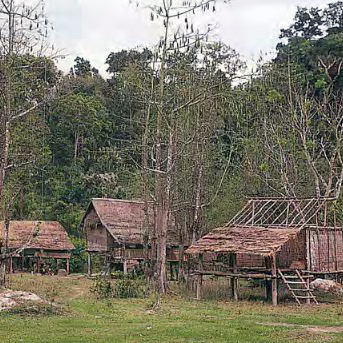งานวิจัยและบทความ

การสำรวจค้างคาว: พื้นที่อนุรักษ์ความหลากหลายทางชีวภาพแห่งชาติเซเปียน
โดย Mark F. Robinson
เผยแพร่เมื่อ 19 มิถุนายน 2024
การอนุรักษ์ทรัพยากรธรรมชาติและสิ่งแวดล้อม
แหล่งจัดเก็บทรัพยากรต้นฉบับ
Natural History Bulletin of the Siam Society (NHBSS) , Vol. 46, No. 2, 1998
ดาวน์โหลด
Chiroptera Survey: Xe Piane National Biodiversity Conservation Area, Lao P.D.R.
To formulate comprehensive and effective management plans for the conservation of Piane's biodiversity it is vital that baseline data are obtained on the species prese
ecological requirements. Prior to this work little was known of the bats in indeed this was the first study of bats in the area.
A total of 19 species of bat were recorded, 5 Megachiroptera and 14 Microchiroptera. Three species, Rousettus amplexicaudatus, Taphozous theobaldi and Hesperoptenus had not been recorded before in Lao PDR. The nearest previous record of H. blandfordi was from over 700 km to the west, in Huai Kha Khaeng Wildlife Sanctuary, western Thailand.
A systematic search for bat roosts resulted in the discovery of 15 sites of 8 species: T. theobaldi, Megaderma lyra, M. spasma, Rhinolophus acuminatus, Hipposideros pomona, H. cineraceus and H. larvatus. Eleven were in hollow tree trunks, with the remainder in caves/rock shelters and a hollow log on the forest floor. Nine roosts of M. spasma were found, all in hollow trunks of trees, 7 of which were Lagerstroemia calyculata, a species which becomes hollow with age. Three cave roosts were found, although these were only small shallow structures, which each contained up to approximately 700 bats of two or three species.
In a non-limestone region such as Xe Piane, cave roosts will be a limited resource, and so many species of bat will be heavily dependent upon trees with hollow cavities and fissures for roost sites. Also, quality forest will be important for foraging, not only for bats. It is vital that Xe Piane's mature, relatively undisturbed, forests are protected. Ideally, the removal of any timber by commercial companies within the NBCA should be prohibited, and the clearance of forest areas by local people for agriculture and for timber should be controlled.
There was no evidence of villagers from within the protected area hunting bats, and interviews with villagers revealed that bats were seldom caught for any reason. However,
there is clearly a need for further work, particularly to investigate their detailed ecological requirements, so that suitable habitats can be maintained to ensure their continued survival within the protected area.